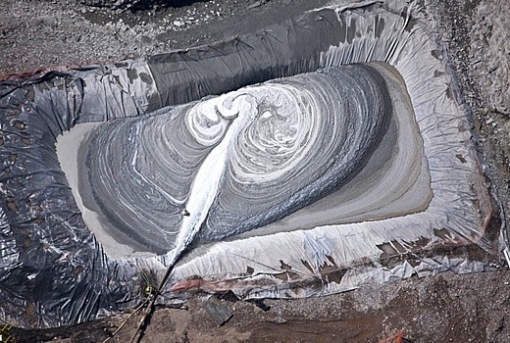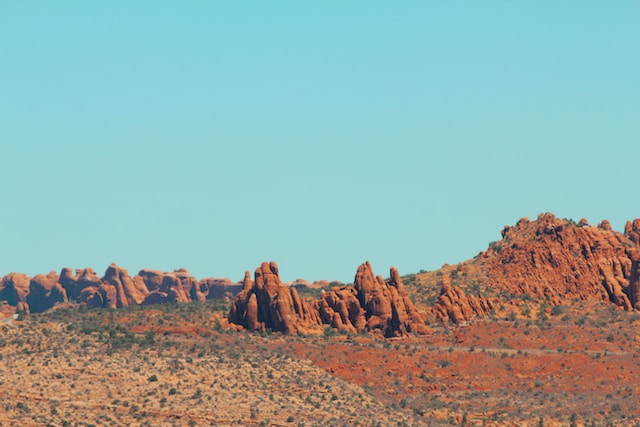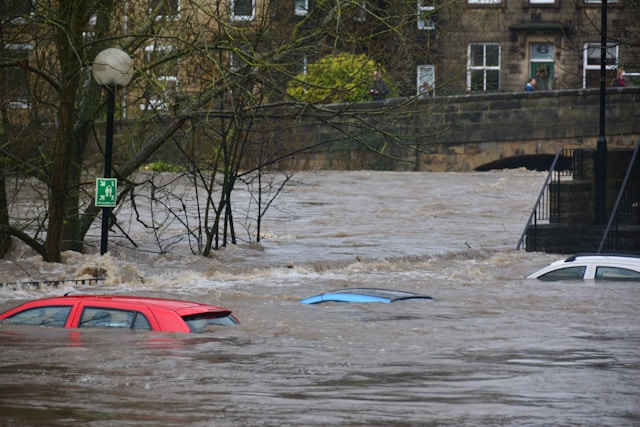by Deep Green Resistance News Service | Mar 21, 2012 | Mining & Drilling, Obstruction & Occupation
From Occupy the Machine
In Honor of Struggles Against the Extraction Industry Everywhere
In Memory of the Workers Whose Lives Were Taken By BP Two Years Ago,
Join Us In Saying:
“CLEAN AIR AND WATER FOR ALL”
“TAKE BACK EARTH DAY!”
LET’S SHUT DOWN THE TAR SANDS AND BLOCKADE AN OIL REFINERY!
Download this Call in pamphlet form to distribute
What: A festival of resistance and alternatives to the fossil fuel economy, in the shadow of the Houston Valero refinery, culminating in a refinery blockade.
When: April 19th – 24th
Where: Hartmann Park, Manchester Neighborhood, Houston, TX
Why: The Alberta Tar Sands project is uprooting and poisoning Indigenous people in Canada while destroying the ancient boreal forests that are their home. The huge amount of carbon released will seriously worsen global climate change. The Keystone XL Pipeline will take oil from one of the most ecologically devastating projects on the face of the planet to Houston.
In Houston it will be refined by Valero and other companies. These refineries are surrounded by working-class neighborhoods throughout the Gulf, bringing cancer-causing toxins directly into their backyards. The majority of the Tar Sands oil processed in these refineries will be shipped overseas, ensuring that North American oil workers and those whose rights and lives have been uprooted by these companies won’t even see any long-term benefit for themselves.
Meanwhile, two years after the Deepwater Horizon explosion that killed 11 workers and devastated the communities of the Gulf, BP has had a record year of profits. BP has escaped justice yet again in its recent legal victory against the shrimpers and fishermen who they’ve put out of work and the families of the workers who died under their watch.
We invite those who oppose the Tar Sands Project and who want clean air, water and soil for all to come down to Houston for a festival of resistance and alternatives to the fossil fuel economy. Let’s continue to build the power of our communities, amplify the voices of those most affected by companies like Valero, and join together in nonviolent direct action to blockade a refinery.
(more…)
by Deep Green Resistance News Service | Mar 19, 2012 | Toxification
By University of Colorado, Denver
In a new study, researchers from the Colorado School of Public Health have shown that air pollution caused by hydraulic fracturing or fracking may contribute to acute and chronic health problems for those living near natural gas drilling sites.
“Our data show that it is important to include air pollution in the national dialogue on natural gas development that has focused largely on water exposures to hydraulic fracturing,” said Lisa McKenzie, Ph.D., MPH, lead author of the study and research associate at the Colorado School of Public Health.
The study will be published in an upcoming edition of Science of the Total Environment.
The report, based on three years of monitoring, found a number of potentially toxic petroleum hydrocarbons in the air near the wells including benzene, ethylbenzene, toluene and xylene. Benzene has been identified by the Environmental Protection Agency as a known carcinogen. Other chemicals included heptane, octane and diethylbenzene but information on their toxicity is limited.
“Our results show that the non-cancer health impacts from air emissions due to natural gas development is greater for residents living closer to wells,” the report said. “The greatest health impact corresponds to the relatively short-term, but high emission, well completion period.”
That’s due to exposure to trimethylbenzenes, aliaphatic hydrocarbons, and xylenes, all of which have neurological and/or respiratory effects, the study said. Those effects could include eye irritation, headaches, sore throat and difficulty breathing.
“We also calculated higher cancer risks for residents living nearer to the wells as compared to those residing further [away],” the report said. “Benzene is the major contributor to lifetime excess cancer risk from both scenarios.”
The report, which looked at those living about a half-mile from the wells, comes in response to the rapid expansion of natural gas development in rural Garfield County, in western Colorado.
Typically, wells are developed in stages that include drilling followed by hydraulic fracturing , the high powered injection of water and chemicals into the drilled area to release the gas. After that, there is flowback or the return of fracking and geologic fluids, hydrocarbons and natural gas to the surface. The gas is then collected and sold.
Garfield County asked the Colorado School of Public Health to assess the potential health impacts of these wells on the community of Battlement Mesa with a population of about 5,000.
McKenzie analyzed ambient air sample data collected from monitoring stations by the Garfield County Department of Public Health and Olsson Associates Inc. She used standard EPA methodology to estimate non-cancer health impacts and excess lifetime cancer risks for hydrocarbon exposure.
McKenzie noted that EPA standards are designed to be public health proactive and may overestimate risks.
“However, there wasn’t data available on all the chemicals emitted during the well development process,” she said. “If there had been, then it is entirely possible the risks would have been underestimated.”
The report concludes that health risks are greater for people living closest to wells and urges a reduction in those air emissions.
McKenzie said future studies are warranted and should include collection of area, residential and personal exposure data where wells are operating. Additional studies, she said, should also examine the toxicity of other hydrocarbons associated with natural gas development.
From PhysOrg: http://www.physorg.com/news/2012-03-air-emissions-fracking-sites-impact.html

by Deep Green Resistance News Service | Mar 18, 2012 | Alienation & Mental Health, Mining & Drilling, Repression at Home, Toxification
By Walter Brasch / Dissident Voice
A new Pennsylvania law endangers public health by forbidding health care professionals from sharing information they learn about certain chemicals and procedures used in high volume horizontal hydraulic fracturing. The procedure is commonly known as fracking.
Fracking is the controversial method of forcing water, gases, and chemicals at tremendouspressure of up to 15,000 pounds per square inch into a rock formation as much as 10,000 feet below the earth’s surface to open channels and force out natural gas and fossil fuels.
Advocates of fracking argue not only is natural gas “greener” than coal and oil energy, with significantly fewer carbon, nitrogen, and sulfur emissions, the mining of natural gas generates significant jobs in a depressed economy, and will help the U.S. reduce its oil dependence upon foreign nations. Geologists estimate there may be as much as 2,000 trillion cubic feet of natural gas throughout the United States. If all of it is successfully mined, it could not only replace coal and oil but serve as a transition to wind, solar, and water as primary energy sources, releasing the United States from dependency upon fossil fuel energy and allowing it to be more self-sufficient.
The Marcellus Shale—which extends beneath the Allegheny Plateau, through southern New York, much of Pennsylvania, east Ohio, West Virginia, and parts of Maryland and Virginia—is one of the nation’s largest sources for natural gas mining, containing as much as 500 trillion cubic feet of natural gas. Each of Pennsylvania’s 5,255 wells, as of the beginning of March 2012, with dozens being added each week, takes up about nine acres, including all access roads and pipe.
Over the expected life time of each well, companies may use as many as nine million gallons of water and 100,000 gallons of chemicals and radioactive isotopes within a four to six week period. The additives “are used to prevent pipe corrosion, kill bacteria, and assist in forcing the water and sand down-hole to fracture the targeted formation,” explains Thomas J. Pyle, president of the Institute for Energy Research. However, about 650 of the 750 chemicals used in fracking operations are known carcinogens, according to a report filed with the U.S. House of Representatives in April 2011. Fluids used in fracking include those that are “potentially hazardous,” including volatile organic compounds, according to Christopher Portier, director of the National Center for Environmental Health, a part of the federal Centers for Disease Control. In an email to the Associated Press in January 2012, Portier noted that waste water, in addition to bring up several elements, may be radioactive. Fracking is also believed to have been the cause of hundreds of small earthquakes in Ohio and other states.
The law, an amendment to Title 52 (Oil and Gas) of the Pennsylvania Consolidated Statutes, requires that companies provide to a state-maintained registry the names of chemicals and gases used in fracking. Physicians and others who work with citizen health issues may request specific information, but the company doesn’t have to provide that information if it claims it is a trade secret or proprietary information, nor does it have to reveal how the chemicals and gases used in fracking interact with natural compounds. If a company does release information about what is used, health care professionals are bound by a non-disclosure agreement that not only forbids them from warning the community of water and air pollution that may be caused by fracking, but which also forbids them from telling their own patients what the physician believes may have led to their health problems. A strict interpretation of the law would also forbid general practitioners and family practice physicians who sign the non-disclosure agreement and learn the contents of the “trade secrets” from notifying a specialist about the chemicals or compounds, thus delaying medical treatment.
The clauses are buried on pages 98 and 99 of the 174-page bill, which was initiated and passed by the Republican-controlled General Assembly and signed into law in February by Republican Gov. Tom Corbett.
“I have never seen anything like this in my 37 years of practice,” says Dr. Helen Podgainy, a pediatrician from Coraopolis, Pa. She says it’s common for physicians, epidemiologists, and others in the health care field to discuss and consult with each other about the possible problems that can affect various populations. Her first priority, she says, “is to diagnose and treat, and to be proactive in preventing harm to others.” The new law, she says, not only “hinders preventative measures for our patients, it slows the treatment process by gagging free discussion.”
Psychologists are also concerned about the effects of fracking and the law’s gag order. “We won’t know the extent of patients becoming anxious or depressed because of a lack of information about the fracking process and the chemicals used,” says Kathryn Vennie of Hawley, Pa., a clinical psychologist for 30 years. She says she is already seeing patients “who are seeking support because of the disruption to their environment.” Anxiety in the absence of information, she says, “can produce both mental and physical problems.”
Read more from TruthOut

by Deep Green Resistance News Service | Mar 17, 2012 | Biodiversity & Habitat Destruction, Mining & Drilling, NEWS
By the Natural Resources Defense Council
The Obama administration’s decision today authorizing nearly 1,300 new natural gas wells in Utah Desolation Canyon wilderness and other remote areas will degrade the pristine region’s air quality and hurt the state’s tourism industry, according to a coalition of environmental groups.
In approving the so-called Gasco development project, the Department of the Interior also rejected calls by the Environmental Protection Agency and tens of thousands of citizens from across the country to approve an alternative to Gasco’s proposal. This alternative would have allowed for significant development while protecting the department’s plan to designate Desolation Canyon as wilderness and reducing the overall footprint and impact of the project.
“Secretary Salazar is making the wrong decision to approve the Gasco project in a way that creates irreversible risks to Desolation Canyon,” said Peter Metcalf CEO/President of Black Diamond, Inc. “This decision is particularly disappointing in light of the fact that conservationists, and the EPA (with support of the leading companies in the American outdoor industry) endorsed an alternative drilling plan that protected the sanctity of the Desolation Canyon proposed wilderness, while allowing for robust drilling to occur on a huge parcel abutted to the proposed wilderness area. It is truly tragic that the BLM can’t show some small degree of balance.”
The Desolation Canyon region is important to Utah desert recreation and tourism, a $4 billion industry that generates approximately $300 million annually in state tax revenue and supports 65,000 jobs.
The Desolation Canyon proposed wilderness is the largest unprotected roadless complex in the lower 48 states. Centered around the Desolation Canyon stretch of the Green River, the area’s spectacular solitude and endless vistas are awe-inspiring. But now this remarkable place is once again in the crosshairs for destruction.
“It’s bewildering that Secretary Salazar – who has been such a strong advocate of conserving America’s great outdoors — would allow turning Desolation Canyon into an industrial wasteland,’’ said Sharon Buccino, director of NRDC’s Land and Wildlife program. “Desolation Canyon has some of the most stunning wilderness vistas found anywhere. It is no wonder that EPA gave this proposal its worst environmental rating possible.”
Gasco – a Colorado-based natural gas company – wants to drill nearly 1,300 new gas wells in the area, including more than 200 new wells in the Desolation Canyon proposed wilderness and gateway areas.
The administration analyzed two alternatives to the company’s proposed action, both of which would have barred drilling in the Desolation Canyon proposed wilderness and while affording greater protections for the Green River and Nine Mile Canyon badlands. But the administration ended up supporting the company’s plans to drill in all these sensitive places.
This approval comes at a time when natural gas prices are at near-record lows due to an abundance of gas supplies, and companies are idling drilling rigs in developed fields in the Uinta Basin.
“Desolation Canyon and Nine Mile Canyon along the Green River are some of the wildest places left in Utah, and they should be protected from drilling,” said Nada Culver, director and senior counsel of The Wilderness Society’s BLM Action Center. “There are more than 1,000 approved BLM drilling permits going unused by oil and gas companies in Utah alone. We should take the most responsible approach to developing this area in order to preserve the spectacular wilderness-quality lands, the rare and extraordinary rock art, and the threatened plant and wildlife species in Desolation Canyon.”
The BLM itself has described Desolation Canyon as “…one of the largest blocks of roadless BLM public lands within the continental United States. This is a place where a visitor can experience true solitude – where the forces of nature continue to shape the colorful, rugged landscape.”
Eastern Utah has experienced several years of record high winter-time ozone levels that is largely linked to oil and gas development. According to Gasco’s own data, this project will add to those unsafe pollution levels.
“Secretary Salazar’s approval of the controversial Gasco project stands in stark contrast to the agreements worked out over the past few years between industry, the Interior Department, and conservation groups over several natural gas projects in eastern Utah,” said Stephen Bloch, an attorney for the Southern Utah Wilderness Alliance. “There is a proven, better way to bring parties together and produce a win-win solution. It is inexplicable why the Secretary is turning his back on this approach.”
“The Desolation Canyon region is one of the most iconic landscapes of wildness that Utah is known for,” said Tim Wagner of the Sierra Club. “People from all over the world come to Desolation every year for the many outdoor experiences. To permanently mar this area over 200 new natural gas wells is a serious error in land management decision-making.”
From NRDC: http://www.nrdc.org/media/2012/120316.asp
Photo by Mattia Bericchia on Unsplash

by Deep Green Resistance News Service | Mar 16, 2012 | Climate Change, NEWS
By Environment News Service
Nearly four million Americans are at risk of severe flooding as climate change raises sea levels and intensifies storm surges during the coming century, new research indicates.
Two studies, published today in the journal “Environmental Research Letters,” provide evidence that sea levels are rising, creating higher and higher floods that will inundate much of the low-lying coastal United States.
Ben Strauss, a researcher at the nonprofit Climate Central who co-authored both papers, said, “The sea level rise taking place right now is quickly making extreme coastal floods more common, increasing risk for millions of people where they live and work.”
“Sea level rise makes every single coastal storm flood higher,” said Strauss. “With so many communities concentrated on U.S. coasts, the odds for major damage get bigger every year.”
The first study, by researchers at Climate Central and the University of Arizona, finds that around 32,000 square kilometers (12,355 square miles) of U.S. land lies within one vertical meter of the high tide line.
This area encompasses about 2.1 million housing units where 3.9 million people live.
For this study, the researchers created a new model to identify the areas of the U.S. mainland that are at risk of flooding. With a predicted sea level rise of one meter (39 inches) or more by the end of the century, this study suggests that the U.S. government’s currently designated flood zones should not be considered stable.
This study demonstrates that coastal dwellings on every coast are exposed to this risk. At the state level, areas surrounding the Gulf of Mexico appear to be the most vulnerable. In terms of population, Florida is the most vulnerable, followed by Louisiana, California, New York and New Jersey.
The Los Angeles metropolitan area is of great concern, the researchers warn, citing previous studies suggesting that flooding may reach rare heights more swiftly in southern California than in any other U.S. mainland area.
Read more from Environment News Service:
Photo by Chris Gallagher on Unsplash



